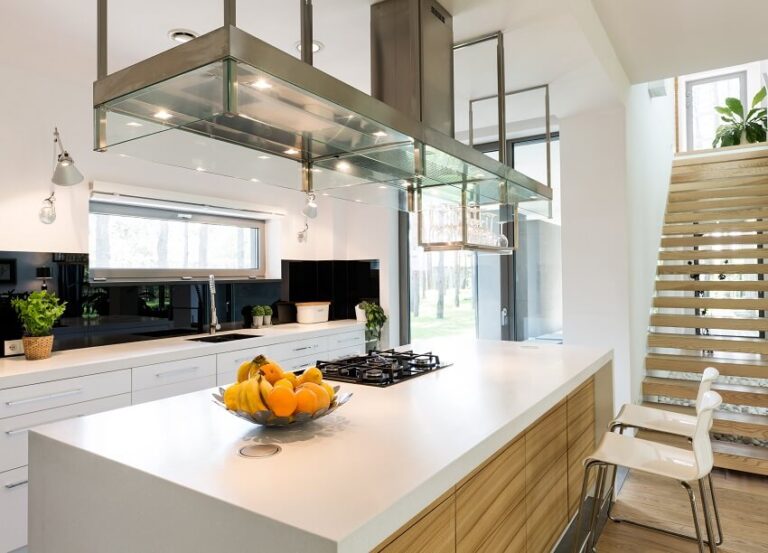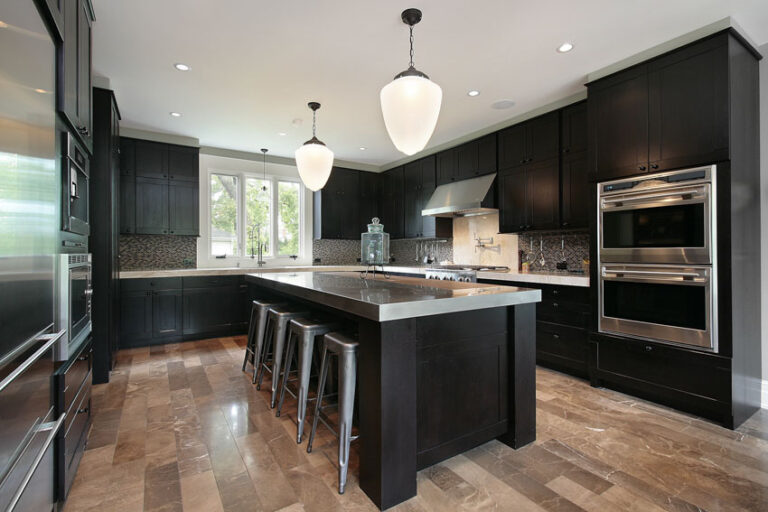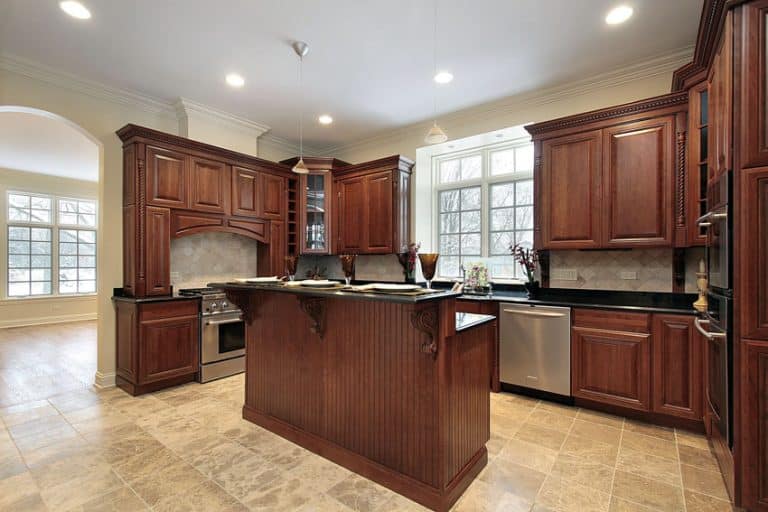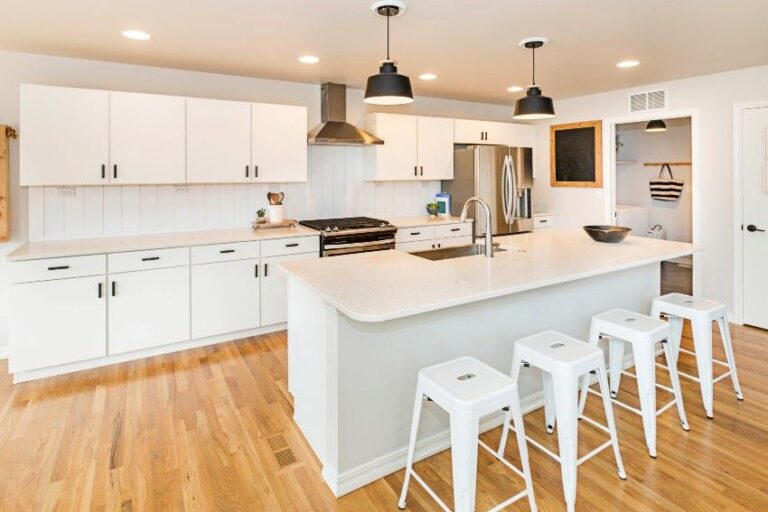Composite Sink Vs Stainless Steel (Comparison Guide)
From prehistoric wood and stone wash basins, kitchen fixtures have truly evolved into more long-lasting and easily maintained materials. Some examples include a composite sink vs stainless steel.

This article compares these popular choices, highlighting their durability, maintenance, cost, and style, to help homeowners decide between the popular stainless steel and composite finish materials.
Composite Vs. Stainless Sink Materials

Stainless Steel: With its desirable features, stainless steel has been an enduring material for kitchen fixtures, hardware, and appliances. Thanks to its chromium component, stainless steel is corrosion-resistant, which is a typical concern for areas exposed to constant moisture and water.
Steel with more than 14% chromium is categorized as stainless steel, whereas most domestic sinks are under series 304 with 18 percent chromium and 8 percent nickel. While chromium contributes to strength, corrosion, and stain resistance, nickel content provides resistance to discoloration and maintains that glossy finish. The nickel alloy also adds to the strength and corrosion resistance of the material.
Stainless heat does absorb heat but cannot hold heat compared to other materials. This can be a lesser feature if you aim to have dirty dishes or pans soaked under hot or warm water in your sink.
Composite Sink: A composite sink, as the term implies, comprises two or more materials with distinct properties. Usually made from 80 percent quartz, granite, or acrylic with 20 percent resin, composite sinks are relatively known in the market but are now gaining popularity as an alternative to conventional types of kitchen sinks.
If you’re looking for a synergy of properties with wider color tone options available to choose from and prepared to allot a higher amount for the material cost, then a composite sink is a great choice.
Among the most durable composite sinks are made from quartz and granite, with the manufactured material slightly higher on the hardness scale. You’ll find that the natural materials are harder to chip or crack.
They are also able to hold heat longer compared to stainless steel. Some homeowners prefer to fill up their sinks with warm or hot water to soak down the dishes for a period of time to loosen the food stuck on its surface.
Design Options

Stainless Steel: From top-mount or drop-in sinks to curved or round basins, you’ll easily find the perfect stainless steel sink design to accommodate your needs. Because it is made from metal, the kitchen sink material can easily be manufactured into different shapes and sizes.
It is also important to remember that a stainless-steel product’s durability and other properties depend on its thickness. The 14 gauge is best for commercials, while the 16 gauge is common for residential use. A gauge 14 would be 25% percent thicker than gauge 16.
A limiting factor of stainless steel is that you cannot add color to the metal due to its nonporous surface. So, you are limited to gray, silver, or black finish.
Composite Sink: Natural stone and quartz composite sinks are desirable options if you’re looking for an organic look. With their color and if there are veining visible, they create a warmer look to a kitchen counter compared to stainless steel. They also come in different finishes.
If you desire a glossy sheen for your sink, you can opt for a gloss finish, or if you desire a more subdued look, there’s a matte sealant available for granite and quartz. Like its conventional countertop, composite sinks also come in different designs. You can have a single or double bowl, top mount, or drop-in designs.
Durability
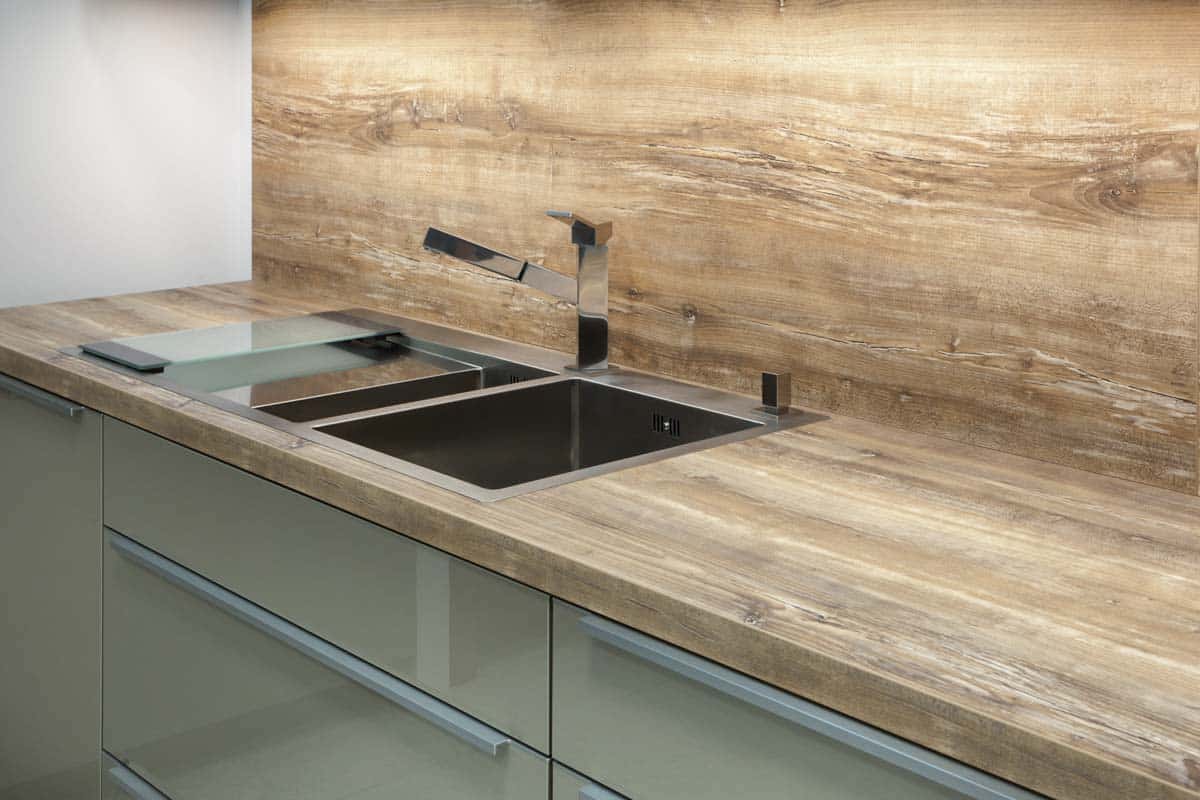
Stainless Steel: Mid-range quality stainless steel can last from 15 to 20 years and can last longer, depending mainly on the gauge and manufacturing quality. With standard use, stainless steel won’t easily chip or crack but can dent when impacted with sharp and heavy objects.
Composite Sink: Composite granite and quartz, in particular, can last from 40 to 50 years with proper installation and quality-made products. The only downside is that edges can get chipped and can have knockout problems if not properly done.
Typically, commercial composite sinks come with knockout or predrilled holes where the kitchen faucets and other plumbing fixtures go through. If you apply too much force on these holes, you can potentially crack the surrounding material.
Heat and Stain Resistance
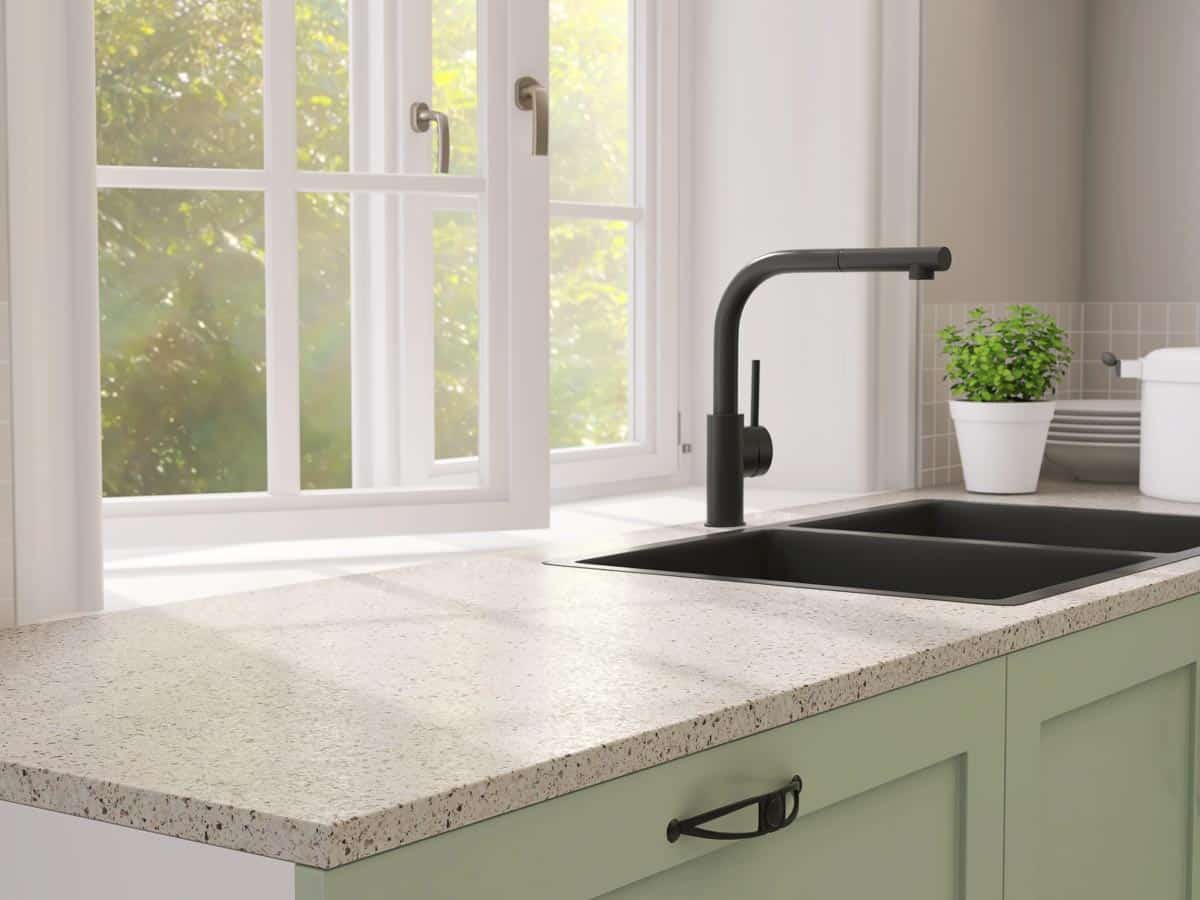
Stainless Steel: You can place a hot object on the stainless-steel sink without worrying about damage. This is because the material has good conductivity and where it spreads the heat outward from the point it reserved the heat.
Also, it will not easily warp or bend when heat is applied, holding up to 600 degrees Fahrenheit, while composite sinks can hold up to 450 degrees Fahrenheit heat resistance.
Composite Sink: Natural stone like granite can absorb and distribute heat, and when made into composite sinks, you are unlikely to crack unless under extreme temperatures. The event where a granite or quartz surface cracks is called a thermal shock, but it is unlikely to happen.
When you place a hot pan over a composite sink such as granite, it will likely burn the sealant first. Then, when it has reached the material surface, it can discolor due to the resin content. Quartz and granite composite sinks are heat-resistant but not heatproof.
Maintenance and Cleaning
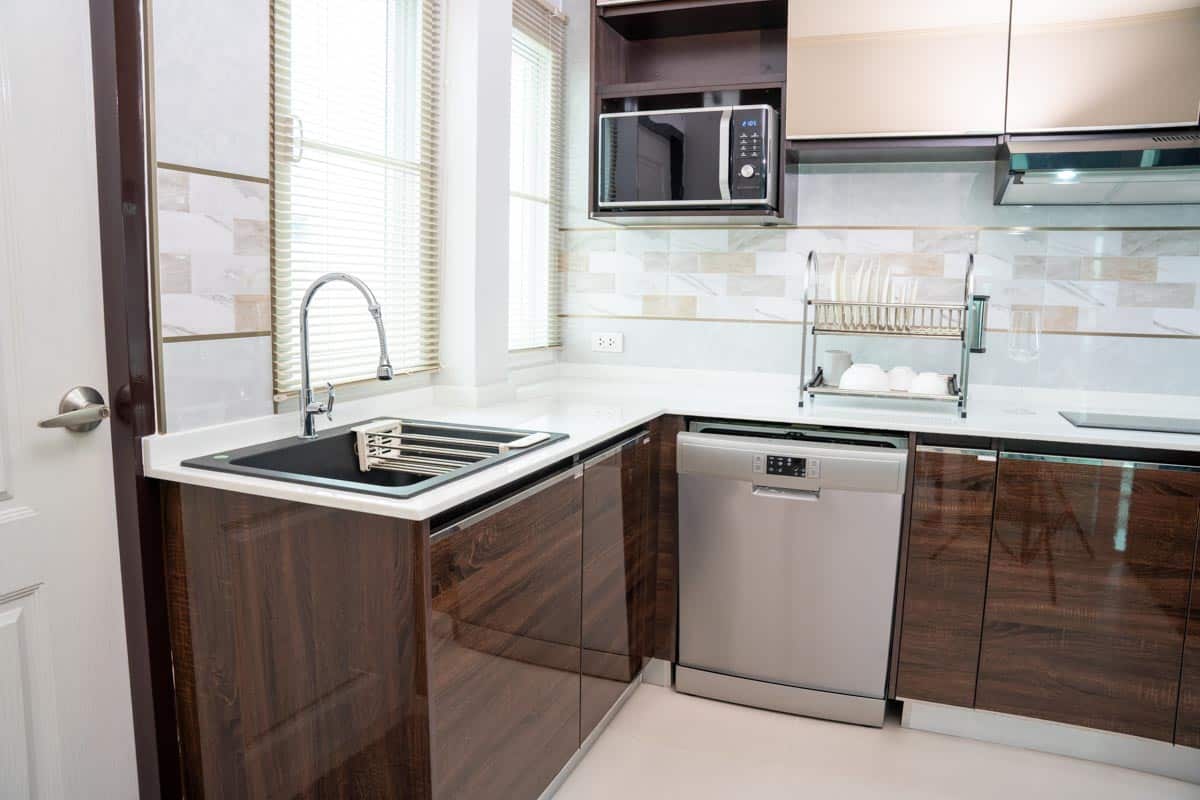
Stainless Steel: With its impervious surface, stainless steel is unlikely to have food stains and harbor bacteria, making the material mostly specified in commercial kitchens and health centers. The metal sink does have a problem with hard water stains. That’s why wiping down your sink after every use is advisable.
While stainless steel is 27% unlikely to develop starches, it is not scratch-proof. Scratches are likely to develop when utensils and other kitchenware scrape against the material. This also means avoiding using steel wool when scraping off the gunk on your sink surface; instead, use a scouring pad.
Composite Sink: A properly sealed composite sink will be easy to maintain, and using the typical cleaning agents with a microfiber cloth will easily remove dirt and soap muck. With its 19% more resistance to stains than stainless steel, you will be unlikely to have problems with staining. However, avoid using acidic cleaning agents as they can burn the top layer and seep through the material, which may cause discoloration.
Cost
Stainless Steel: The metal gauge or the thickness of the material will influence the cost of stainless steel sinks. Other factors include material quality, brand, design, size, installation, and added features.
Stainless steel sinks are available in a wide range of prices. The more shiny the surface, the more expensive the sink. – Popular Mechanics Complete Home How-to, Albert Jackson, David Day
Stainless steel sinks can range from $400 to $600 for mid-range quality, but it can go as low as $85 for a single drop-in sink and can get as expensive as $2,000 for a well-known manufacturer. The wide range of price options makes stainless steel sinks available to different types of homebuyers, which is another reason for its longevity in the market.
Composite Sink: The type of material used will heavily influence the price. For instance, granite composite sinks are likely to cost more than quartz composite sinks and even more compared to acrylic composite sinks. The typical price range for mid-standard composite sinks is around $400 to $800.
You can still get a composite sink for $289 to $300 for a single undermount granite composite sink. But if you plan to get from a well-known brand, prepare to pay as much as $1,000 to $4,000.
See more related content in our article about granite sinks pros and cons on this page.

